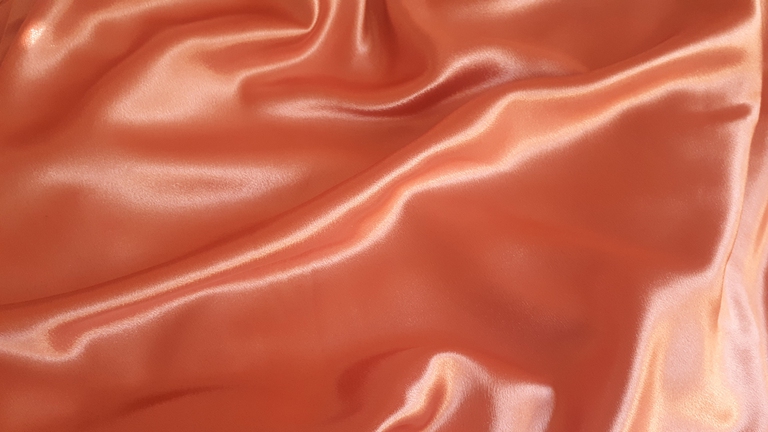https://www.lifegate.it/la-trappola-del-poliestere
- |
- Global demand for oil is set to increase considerably by 2030 and this is partly due to the fact that plastic is now pervasive in our lives.
- One of the sectors in which it is most difficult to do without petroleum derivatives is textiles, where the use of polyester is decidedly massive.
- This material is particularly loved by the fashion world for its ductility and low cost, while the environmental cost of its large-scale use is very high.
In 2021, in the United States alone, they were produced 1.3 million tons of polyester.An enormity if you consider that the USA is alone the third largest producer after China and India.According to a report released by Bloomberg, the global market for textile fibers made from polyester is expected to increase by 5.1 percent from 2022 to 2032, going from a market share of 106 to $174.7 billion between 2022 and 2032.This is the direct consequence of the increase in demand for polyester filaments, which represent approximately 11.7 percent of the global textile industry.

Why polyester is so popular with fashion
Rigidity, flexibility and, last but not least, a low cost make this material very appealing for a whole series of sectors, from automotive to fashion, attracted by the great versatility of polyester which allows “imitate” the qualities of a large number of natural fibres, from silk to animal hair to wool.These imitations, over time and with research, have become increasingly convincing and are now used to a large extent in the fashion industry, including luxury and large fashion houses.
It is difficult to give up the attractiveness of a fiber strong, resistant to abrasions and tears and able to withstand numerous washes without changing the fit.Not only that:polyester is very resistant to creases, always looks freshly ironed and, if properly processed, is also a material that can be breathable.Its use is in fact massive intechnical clothing.Polyester, if of good quality, is truly a miracle material for the textile industry and it is not surprising that its use is important:it is estimated that the 60 percent of the clothes produced annually contains synthetic fibres.But there is more than one but.

Synthetic fibers and increased demand on oil
So what is the problem?Which is a petroleum derivative.Although the textile industry is gearing up to produce more sustainable alternatives from an environmental point of view, one above allEconyl recycled from disused fishing nets, the presence of textile fibers produced from scratch by petrolatum is still very high.
Polyester is in fact a derivative of plastic Pet which, through a fusion process, is then transformed into yarn.According to a report produced by IEA, the International Energy Agency, it will be plastic products that will have the greatest impact on the increase in oil demand in the coming years.

The scenario outlined by Future of petrochemicals, the IEA report indicates that, by 2030, petrochemicals will account for more than a third of global oil demand growth.The demand for plastic has in fact exceeded that of all other bulk materials and advanced economies currently consume up to twenty times the plastic consumed by developing ones.Petrochemical products they are basic to our lives now:for one thing, they are necessary to produce key elements of the energy system such as solar panels, the wind turbines or i thermal insulation coatings.And if replacing petroleum derivatives in these sectors is a long and tortuous road, which will require years of research, in clothing the solution is within reach if you consider that polyester has made its entry into the textile industry only in the 1950s.
Countermeasures
The success of synthetic fibers is largely due to the fact that they are capable of imitate the performance of natural ones, but costing much less.Preferring polyester to natural fibres, however, involves a series of problems, including greater greenhouse gas emissions and dispersion of microplastics into the environment with each wash.However, abandoning it, especially in the low-cost clothing market, is simply utopian, but what can be done to limit the damage caused by the ever-increasing demand for plastic fibres?

Prefer natural fibers or recycled and certified synthetic fibres:between a natural fiber and a synthetic one that simply imitates it, our choice should fall on the natural one.Producing polyester is, in terms of carbon dioxide emissions, three times more expensive than cotton.Often, however, textile products, even if based on wool or cotton, still have a synthetic component inside them: it is therefore essential to pay maximum attention to the label to be truly aware of what we are buying.We have talked about several times greenwashing and misleading communication by the fashion industry.Recycled synthetic fibers exist, but it is important that they are certified:a guarantee in this sense are the products made with Econyl, the regenerated nylon produced by Aquafil starting from plastic waste and in turn recyclable infinite times.
Recycle!
We have become accustomed to recycling paper, plastic, glass, metal, but not yet clothes: it is estimated that only 14 percent of the polyester used in textiles is recycled today.Yet producing new clothes from existing fibers has much less impact than creating new ones. Jeplan is a Japanese company that has developed a technology that, through a depolymerization process and then purification, recycles polyester fibers present in clothing.There Bring technology – this is the name of the process patented by this Japanese company – would allow the recycling process to be repeated several times:the company, which aims to recover 30 thousand tons of clothing in polyester per year, has distributed clothing collection containers throughout Japan.Another good practice is to invest in products made with theupcycling or in second hand.Since these fibers are already in circulation, let's use them without buying new ones.
